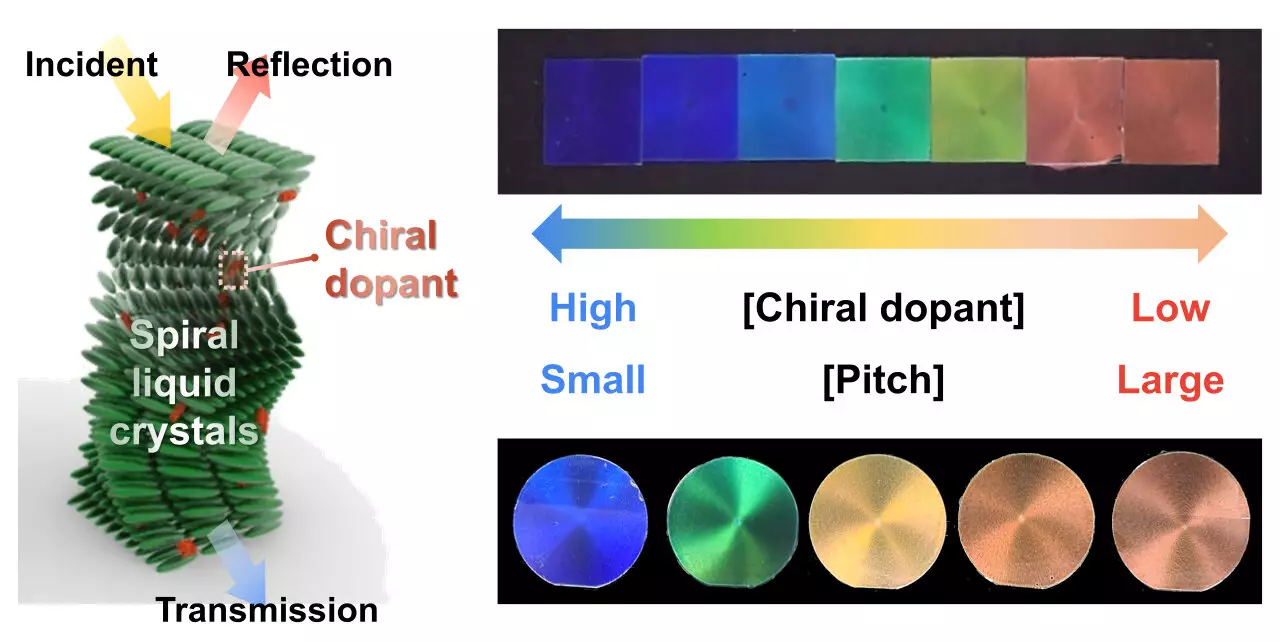In a groundbreaking study conducted by Dr. Jin Gu Kang and his team at the Nanophotonics Research Center at the Korea Institute of Science and Technology (KIST), a new colorful radiation-cooling liquid crystal material has been successfully developed. This material has the ability to cool without the need for external power while also emitting vibrant colors. The research has been published in the Chemical Engineering Journal, showcasing the potential of this innovation in the field of eco-friendly cooling technology.
Radiative cooling is a cutting-edge cooling technique that releases infrared radiation as heat through the atmospheric window, resulting in a reduction in temperatures. This technology is gaining popularity as a sustainable alternative to power-consuming air conditioners. Traditionally, radiative cooling materials for daytime use are white to minimize sunlight absorption. While these materials offer excellent cooling properties, they are not suitable for applications where aesthetics are important, such as buildings and vehicles.
The development of colored radiative cooling materials that combine efficient cooling capabilities with aesthetic appeal has been a challenge in the field. Previous attempts at creating colored radiative cooling materials relied on light absorption to generate color, leading to limited temperature reduction. Alternative materials based on photonic crystals that utilize light reflection showed promise in cooling performance but struggled to achieve distinct colors.
To address these challenges, Dr. Kang and his team engineered bent spiral liquid crystal photonic crystals. By leveraging the unique properties of the commercial liquid crystal (LC242), the researchers were able to create colored photonic crystals with a periodic structure when arranged in a spiral configuration. This innovative approach resulted in vivid colors that were not dependent on viewing angles, unlike conventional photonic crystals.
Through a spin coating process, the team successfully fabricated the colored radiation-cooling liquid crystal material. By incorporating an upper transparent film and a lower metallic thin film, the material exhibited a temperature reduction of approximately 30.8°C compared to standard colored paint and 3.1°C lower than ambient air during the day. This advancement opens up possibilities for reducing air conditioning usage in aesthetically sensitive environments like buildings and vehicles, as well as providing power-free cooling for outdoor recreational equipment and military shelters.
The development of colored radiation-cooling liquid crystal material represents a significant advancement in the field of cooling technology. Dr. Jin Gu Kang emphasized the simplicity and cost-effectiveness of the spin coating process used to manufacture this innovative material. With its dual functionality of cooling and emitting vibrant colors, this material holds great promise for sustainable cooling solutions in a variety of applications.


Leave a Reply